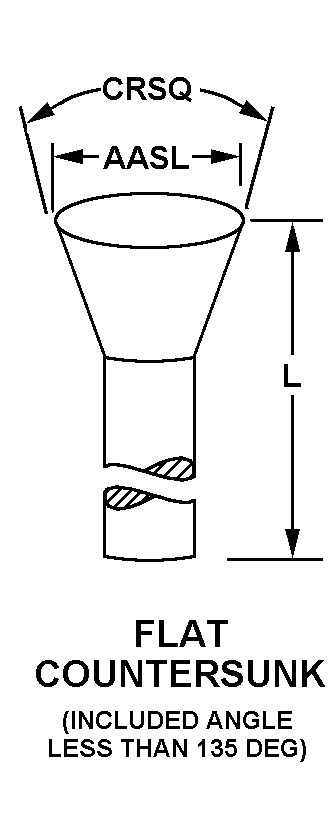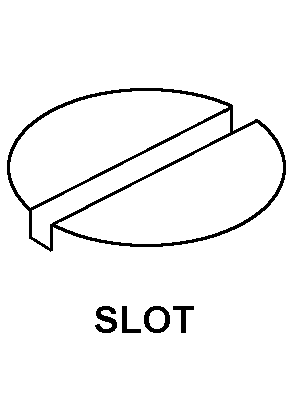5305000133856
Countersink Angle: Between 80 degrees and 82 degrees.
Price Quote Get an up to date pricing and availability quote for this product. Order online or over the phone.
Quality Commitment
Serving our customers with quality and safety first.
- AS9120 Certified
- Audited supply chain
- ITAR Registered
- DDTC Registered
- HAZMAT Certified
- Customer service objectives
- Every product 100% inspected

5305-00-013-3856 Specification Set by the OEM (see RNCC code 3)
steel comp 301 or steel comp 302 or steel comp 303 or steel comp 304 or steel comp 305 or steel comp 308 or steel comp 309 or steel comp 310 or steel comp 314 or steel comp 316 or steel comp 317 or steel comp 321 or steel comp 323 or steel comp 324 or ste
between 80 degrees and 82 degrees
18
flat countersunk
between 0.6in. and 0.635in.
slot
0.312in. ⁓5/16"
2in. ⁓2-1/64"
1.89in. ⁓1-57/64"
RIGHT-Hand
2a
fed standard 66 federal standard all material responses
cadmium or zinc
unc
i type and 2s style
Cross Reference Parts Part numbers that meet the specification outlined on this page and set by the OEM
Identification Item Identification Guide (IIG) and Item Name Code (INC)


Definition Definition of approved item name (AIN): "SCREW,MACHINE"
An externally threaded fastener whose threaded portion is of one nominal diameter, no 0 (0.060 in./1.5 mm) or larger, designed to be held or driven with either a wrench or an inserted driver or both (excluding internal socket or internal multiple spline types), in sizes below no. 10 (0.190 in./5 mm). No. 10 and larger sizes must have a head designed for any type inserted driver (excluding internal socket or internal multiple spline types), but may also be designed for external wrenching. A locking feature may be incorporated in the design of the head or threads. Excludes bolt, clevis; bolt, externally relieved body; screw, externally relieved body; and screw, assembled washer. See also, screw, instrument; bolt, machine; bolt, internal wrenching; and screw, cap socket head.
5305-00-013-3856 Material Hazmat, Precious Metals, Criticality, Enviroment, and ESD
Indicates there is no data in the hmirs and the nsn is in a fsc not generally suspected of containing hazardous materials.
Precious metal content is unknown
The item does not have a nuclear hardened feature or any other critical feature such as tolerance, fit restriction or application.
Identification Codes
HMIC: Hazardous Material Indicator Code. A one position code that identifies a hazardous item.
PMIC: Precious Metal Indicator Code. A one position code which identifies items that have precious metals as part of their content. precious metals are those metals generally considered to be uncommon, highly valuable, and relatively superior in certain properties such as resistance to corrosion and electrical conductivity.
ESD: Electrostatic Discharge. Indicates if an item is susceptible to electrostatic discharge or electromagnetic interference damage. electrostatic discharge damage occurs when an accumulation of static electricity generated by the relative motion or separation of materials is released to another item by direct contact. electromagnetic interference damage occurs when an item comes into proximity with an electrostatic or magnetic field.
ENAC: Enviromental Attribute Code. Identifies items with environmentally preferred characteristics.
CRITL: Criticality Indicator Code. Indicates an item is technically critical by tolerance, fit, application, nuclear hardness properties, or other characteristics.






